A dual air brake system is a redundant braking mechanism in heavy vehicles, ensuring safety through two independent circuits.
Introduction
Air brake systems have evolved to become a crucial component in the world of transportation, especially for heavy vehicles. Their capacity to deliver controlled, reliable braking in large-scale vehicles has proven invaluable over the years. Understanding the foundation of air brake systems and their particular significance in heavy vehicles can provide clarity on their ubiquitous presence in the industry.
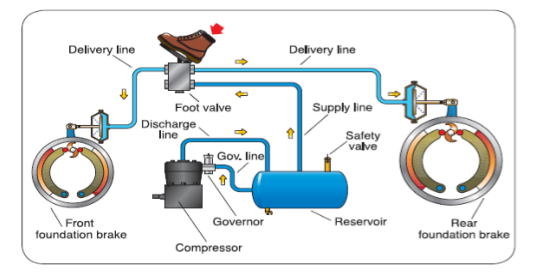
Basics of Air Brake Systems
Air brake systems, in essence, utilize compressed air as a medium to transmit force from the driver’s brake pedal to the vehicle’s brake shoes or pads, thereby slowing or stopping the vehicle. Here’s a simple breakdown:
- Compressor: The heart of the system, typically driven by the vehicle’s engine, compresses ambient air and sends it to the air reservoir.
- Air Reservoir: Stores compressed air, ensuring a constant supply whenever the brakes are applied. The size and specifications of the reservoir can vary, but a standard heavy vehicle might use a 12-liter reservoir.
- Brake Chambers: These convert the energy of compressed air into mechanical force, pushing the brake shoes against the brake drum.
- Valves: Control the flow of compressed air, with different valves for tasks like parking brakes or emergency brakes.
Need for Air Brakes in Heavy Vehicles
Heavy vehicles such as trucks and buses require more power and force to bring them to a stop compared to lighter vehicles. The reasons behind the prominence of air brakes in heavy vehicles include:
- Efficiency: Traditional hydraulic brakes might not generate enough force to stop a vehicle that weighs over 30,000 pounds. Air brakes, on the other hand, can efficiently handle these weights, with a deceleration speed of around 4 m/s² under full load.
- Safety: Air brakes come with dual systems for redundancy, ensuring that even if one system fails, the other can still bring the vehicle to a stop. The dual system also provides an emergency braking feature, critical in case of sudden obstructions.
- Cost-Effectiveness: While the initial cost of installing an air brake system can range between $1,500 to $2,500 for a heavy vehicle, the longevity and durability they offer balance out the investment. Maintenance costs are relatively low, with a comprehensive annual check-up averaging around $200.
- Durability: Air brakes are designed for heavy-duty use. Their lifespan often surpasses hydraulic brakes, with many lasting up to 10 years or 1 million miles before needing a major overhaul.
In conclusion, the combination of power, efficiency, and reliability makes air brakes an almost default choice for the heavy vehicle industry.
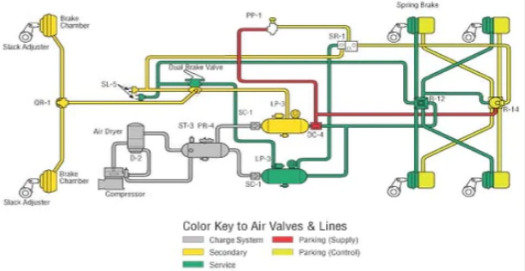
Components of the Dual Air Brake System
The dual air brake system is a vital aspect of many heavy vehicles, offering redundancy and enhanced safety. By splitting the system into primary and secondary circuits, manufacturers ensure that if one system fails, the other remains operational. Each system comprises specific components, with some common elements shared between them.
Primary System (Primary Circuit)
The primary system is often the primary source of braking power for the vehicle, designed to be robust and efficient:
- Primary Air Reservoir: This reservoir stores the compressed air specifically for the primary system. Its typical size can range from 10 to 14 liters, depending on the vehicle’s requirements.
- Primary Relay Valve: Directs air from the primary reservoir to the brake chambers. It ensures rapid response, with actuation times usually below 0.5 seconds.
- Primary Brake Chambers: Located predominantly on the rear wheels, they translate the compressed air’s force into mechanical action, enabling efficient braking. Their specifications can vary, but they are generally designed to handle pressures up to 120 psi.
Secondary System (Secondary Circuit)
The secondary system acts as a backup and also complements the primary system:
- Secondary Air Reservoir: Similar to its primary counterpart but generally smaller in capacity, often holding between 8 to 12 liters of compressed air.
- Secondary Relay Valve: Functions like the primary relay valve but is dedicated to the secondary system.
- Secondary Brake Chambers: Usually associated with the front wheels, these chambers also convert compressed air into mechanical braking action. While similar in design to the primary chambers, their efficiency might vary slightly.
Common Components
Both systems share several components, streamlining the overall design and function:
- Air Compressor: The primary source of compressed air. Typically, it can produce an output of up to 18 CFM (cubic feet per minute) at 2,500 rpm.
- Foot Valve (Brake Pedal): The driver-operated component, sending a signal to apply or release the brakes. It’s designed for durability, with an average lifespan of around 7 years under regular usage.
- Brake Drums and Linings: These are the parts that physically slow down or stop the wheel. Made from high-quality materials, they can withstand temperatures up to 500°C without losing efficiency.
- Safety Valve: Ensures that the air pressure within the system does not exceed safe limits, typically set at 150 psi.
In essence, the dual air brake system provides a two-tier safety mechanism, ensuring that heavy vehicles can stop efficiently under various conditions, further solidifying its value in the transportation industry.
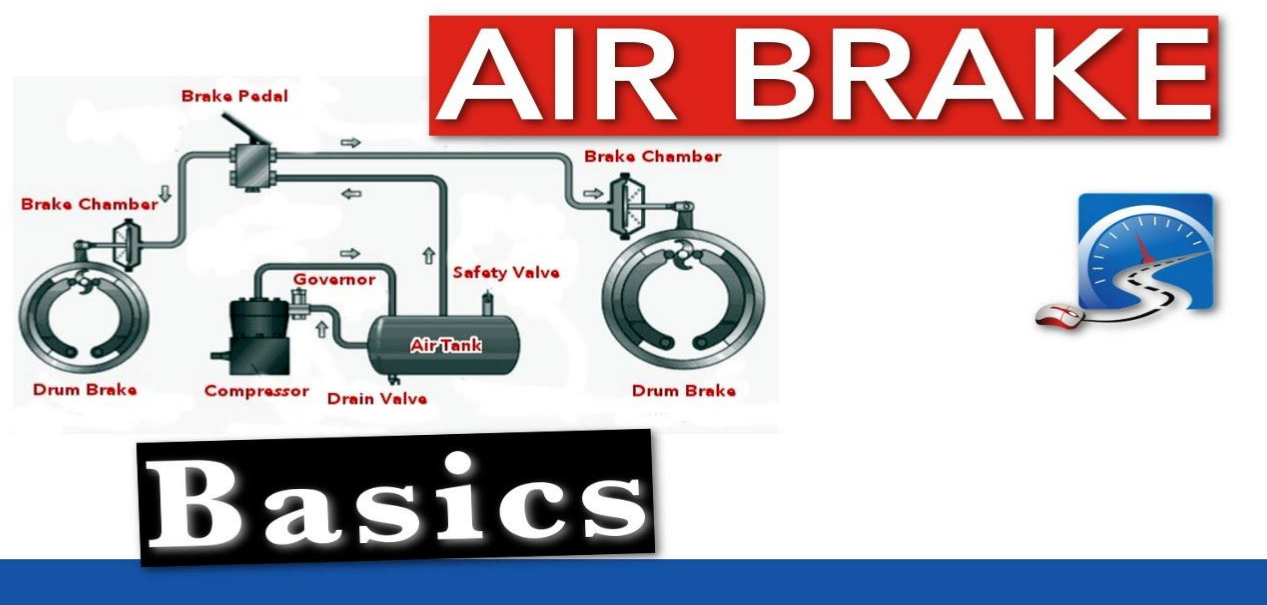
Functioning of the Dual Air Brake System
The dual air brake system is an intricate dance of machinery and physics, tailored to ensure maximum safety and reliability. The process can be divided into three primary stages, each constituting a series of actions and components that seamlessly integrate to bring a massive vehicle to a stop.
Air Compression and Storage
This is the starting point of the braking mechanism:
- Air Compressor: Often powered by the vehicle’s engine, the compressor pulls in atmospheric air, filtering out impurities and moisture, and compresses it. A typical compressor can produce an output of up to 18 CFM (cubic feet per minute) at 2,500 rpm.
- Air Dryer: Positioned between the compressor and the reservoirs, the air dryer’s role is to remove any moisture from the compressed air. This is crucial since water can freeze in colder climates, disrupting the braking system.
- Air Reservoirs: Once purified and compressed, the air is then stored in reservoirs. These act as large-capacity storage units, with a heavy vehicle typically equipped with reservoirs holding between 24 to 28 liters of compressed air.
Air Distribution to Brake Chambers
This stage ensures the compressed air reaches the right components at the right time:
- Brake Valves: When the driver applies the brake, the foot valve, or brake pedal, controls the flow of air from the reservoirs to the brake chambers. This is an instantaneous process, often taking less than a second, ensuring immediate response.
- Relay Valves: These are quick response units that speed up the delivery of air to the brake chambers, especially those farther away from the brake pedal. They maintain consistent pressure across all brake chambers, ensuring uniform braking action.
- Brake Chambers: As the destination of the compressed air, these chambers house diaphragms that expand with the incoming air pressure. This expansion translates into mechanical force, pushing the brake shoes or pads onto the brake drum or disc.
Brake Application and Release
This is where the physical action of slowing or stopping the vehicle takes place:
- Brake Drums and Shoes: With the force exerted from the brake chambers, the brake shoes press against the brake drums. Their friction generates heat and slows down or stops the wheel. The quality of materials used ensures that they can withstand temperatures up to 500°C without degradation.
- Brake Release: When the driver releases the brake pedal, the air pressure in the brake chambers is vented out, causing the diaphragms to retract. This action pulls back the brake shoes or pads, releasing the brakes and allowing the wheel to rotate freely again.
- Adjustment Mechanism: Over time, as the brake shoes or pads wear down, an automatic slack adjuster ensures that the brakes apply efficiently. These adjusters typically have a lifespan of around 500,000 miles, given regular maintenance.
In summary, the dual air brake system is a testament to engineering ingenuity. From the act of compressing air to the tangible deceleration of a colossal vehicle, every component and phase plays a pivotal role, offering both safety and precision.
Advantages of the Dual Air Brake System
The dual air brake system is more than just a technological advancement in the world of transportation. It’s a game-changer, especially for heavy vehicles, offering a blend of safety, efficiency, and longevity. Let’s delve into the specific advantages that make it the preferred choice for many transportation professionals.
Safety and Redundancy
Ensuring passenger and vehicle safety is paramount, and the dual air brake system excels in this regard:
- Dual Systems: As the name suggests, there are two separate circuits: primary and secondary. If one fails due to any unforeseen issues, the other can still function, ensuring the vehicle can be brought to a stop safely.
- Emergency Braking: In scenarios where rapid deceleration is necessary, the dual system offers an emergency brake feature. Even at high speeds, it ensures the vehicle stops in the shortest possible distance.
- Pressure Indicators: Most systems are equipped with indicators to warn the driver if air pressure in any of the circuits falls below the safe limit, typically around 60 psi. This early warning system provides ample time for corrective action.
Efficient Brake Application
Efficiency isn’t just about saving energy; it’s about maximizing output and responsiveness:
- Quick Response: Thanks to relay valves and the direct transmission of compressed air, brake application is almost instantaneous. This results in consistent, predictable braking even under varied road conditions.
- Uniform Braking: The system ensures uniform air pressure distribution across all brake chambers. This means every wheel experiences similar braking force, which prevents uneven wear and offers balanced braking.
- Heat Dissipation: Given the massive friction and subsequent heat generated during braking, the system’s materials are designed for optimal heat dissipation, ensuring the brakes don’t lose efficiency due to overheating.
Prolonged System Life
Durability and longevity translate to cost savings in the long run:
- Durable Materials: Components like brake drums and linings are manufactured from materials capable of withstanding high temperatures, often up to 500°C, ensuring a longer lifespan and reduced wear.
- Low Maintenance: While regular checks are essential, the dual air brake system generally requires less frequent major overhauls compared to other systems. With proper maintenance, many components can last up to 10 years or 1 million miles.
- Cost-Effective: The initial investment in the system might be higher than traditional braking systems. Still, considering the extended life and reduced maintenance costs, it often proves to be more economical in the long run.
In conclusion, the dual air brake system is not just a mere component of heavy vehicles but a vital element ensuring safety, efficiency, and long-term cost savings. Its advantages make it an invaluable asset in modern transportation.
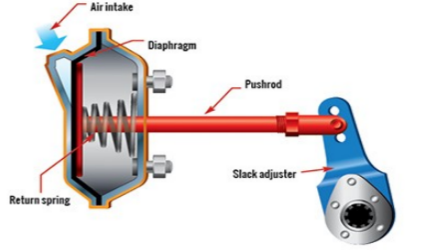
Challenges and Maintenance
While the dual air brake system offers a plethora of advantages, it’s not without its challenges. Like all mechanical systems, it requires regular attention to ensure it functions optimally. Proper maintenance and troubleshooting not only prolong the system’s life but also ensures safety and efficiency.
Air Leak Troubleshooting
Air leaks are one of the most common challenges in a dual air brake system:
- Symptoms: Hissing sounds, reduced brake responsiveness, and low air pressure readings are telltale signs of leaks.
- Checking Procedures: Periodically, drivers should conduct a stationary leak test. With the system pressurized and the engine off, the rate of air pressure drop can indicate potential leaks. A drop greater than 2 psi in a minute for single vehicles (like trucks) or 3 psi for combination vehicles (like truck and trailer) can indicate a leakage problem.
- Solutions: Identifying the source of the leak is paramount. It could be from hoses, valves, or fittings. Once identified, repairs might involve replacing faulty components or tightening loose fittings. Regularly inspecting the quality of air hoses and connections can prevent many leaks.
Regular Inspection and Maintenance
Preventive measures often save time, money, and lives:
- Frequency: While daily basic checks by drivers are advisable, a thorough professional inspection should be conducted at least annually.
- Key Components: Particular attention should be given to brake linings and pads for wear, air reservoirs for rust or damage, and valves for proper operation.
- Cost Factor: Regular maintenance, while incurring a periodic cost, prevents more expensive major overhauls and reduces the risk of accidents. On average, a comprehensive inspection and routine maintenance might set back an operator by around $250 to $400 annually, depending on the vehicle’s usage.
Common Problems and Solutions
Every system has its typical set of issues, and knowing them helps in swift resolutions:
- Low Air Pressure: Causes could range from a malfunctioning compressor, leaks, or a faulty air dryer. Replacing or repairing the faulty component usually resolves the issue.
- Dragging Brakes: If brakes don’t release properly, it could be due to contaminated brake linings, malfunctioning brake chambers, or a sticking valve. Cleaning or replacing the affected parts is typically the solution.
- Uneven Braking: This can be caused by unequal air pressure distribution, worn-out brake components on one side, or a malfunctioning slack adjuster. Regular inspections and ensuring all components are in good condition can prevent this issue.
In essence, while the dual air brake system is robust and reliable, it’s not immune to issues. However, with regular maintenance, prompt troubleshooting, and a keen understanding of its challenges, the system can consistently offer optimal performance over its lifetime.
Regulations and Standards
Ensuring safety and consistency in the realm of transportation, especially when it comes to braking systems, is paramount. Over the years, strict regulations and standards have been established to ensure the reliability and safety of the dual air brake system. These benchmarks not only guide manufacturers but also set the standard for maintenance, operation, and certification.
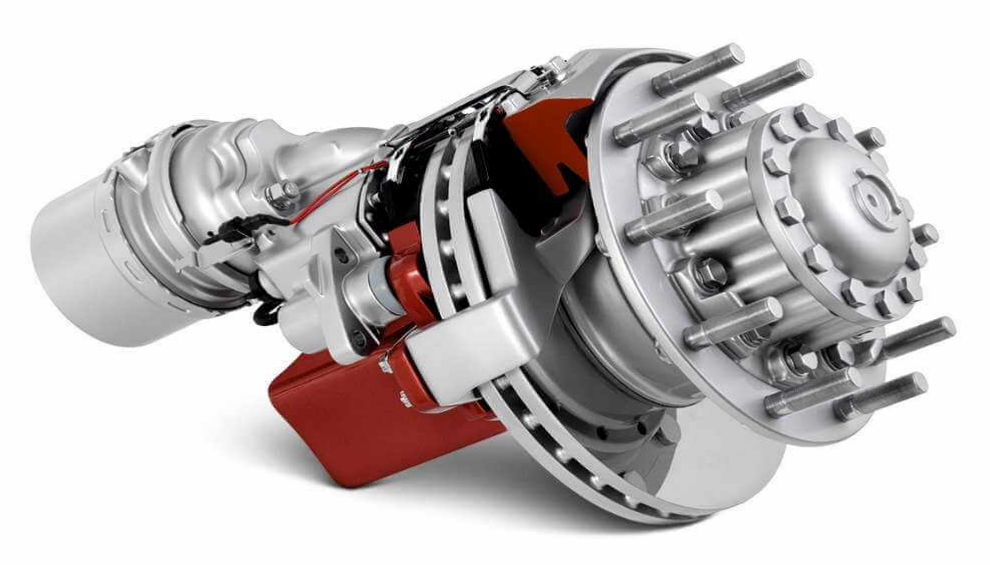
Federal Regulations
Federal regulations form the bedrock of safety standards for vehicles:
- Air Brake Specifications: Defined by the Federal Motor Vehicle Safety Standards (FMVSS), these rules specify the minimum performance criteria for air brake systems. For instance, a heavy truck traveling at 60 mph must come to a complete stop within 250 feet when fully loaded.
- Maintenance and Operations: Federal regulations also dictate mandatory inspection frequencies, maintenance procedures, and operational guidelines. Violations can result in hefty fines, often ranging from $1,000 to $10,000 depending on the severity.
- Training Requirements: Drivers operating vehicles with air brakes must have a special endorsement on their commercial driver’s license (CDL). This ensures they’re trained to handle the unique characteristics and requirements of an air brake system.
Safety Standards and Testing
Ensuring that the components and the system as a whole adhere to strict safety standards is critical:
- Component Testing: Individual components, be it valves, chambers, or compressors, are tested for durability, performance, and efficiency. For instance, brake linings are tested for heat resistance, often ensuring they maintain functionality at temperatures up to 500°C.
- System Testing: The dual air brake system, when fully assembled, undergoes rigorous testing, ensuring synchronicity, responsiveness, and safety. Real-world scenarios, from sudden stops to prolonged deceleration, are simulated during these tests.
- Environmental Testing: Given the varying conditions vehicles operate under, the system is also tested under extreme cold, heat, humidity, and even altitude to ensure consistent performance.
Compliance and Certification
Meeting regulations is one thing, but proving compliance is another ball game:
- Certification Process: Manufacturers must obtain certification for their brake systems, proving they meet or exceed federal and international standards. This involves a series of evaluations, tests, and audits.
- Periodic Reviews: Post-certification, manufacturers and vehicles are subject to periodic reviews and checks, ensuring continued adherence to standards.
- Documentation: Every component and system comes with detailed documentation highlighting its specifications, test results, and compliance certificates. This provides transparency and traceability in the event of issues or recalls.
In essence, the regulations and standards surrounding the dual air brake system underscore its criticality in ensuring safety on the roads. It’s a testament to the combined efforts of regulators, manufacturers, and operators in prioritizing safety and reliability above all.
Comparison with Other Brake Systems
The world of braking systems is vast and diverse. While the dual air brake system stands out for heavy vehicles, it is essential to understand how it compares to other prevalent systems. Each system comes with its own set of advantages and challenges, suitable for specific applications and vehicle types.
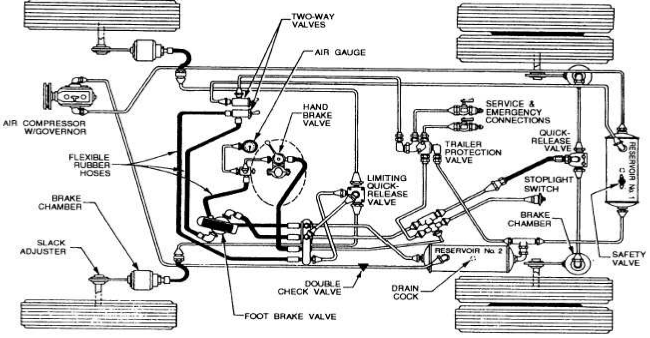
Hydraulic Brake Systems
Hydraulic brakes are commonly found in passenger cars and some lighter commercial vehicles:
- Functioning: Hydraulic brake systems use brake fluid to transmit pressure from the brake pedal to the brake pads or shoes. When the pedal is pressed, the fluid gets compressed, applying force on the brake pads.
- Advantages: They offer a quick response, are compact in design, and generally have lower initial costs compared to air brake systems. Installation is relatively simple, and the system is ideal for lighter vehicles where the braking force required is lesser.
- Challenges: Hydraulic fluid is susceptible to boiling under extreme conditions or absorbing moisture, which can reduce braking efficiency. The system also lacks the redundancy found in dual air brake systems, making it less suitable for heavy-duty applications.
Electromagnetic Brake Systems
Electromagnetic brakes (often called electric or e-brakes) function using electrical power and magnetic forces:
- Functioning: When activated, an electric current passes through a coil, generating a magnetic field. This field attracts the brake disc or plate, causing friction and slowing down or stopping the vehicle.
- Advantages: These brakes offer quick response times, are often lighter in weight, and can be integrated with other vehicle electrical systems. They also have fewer moving parts, which can reduce maintenance needs.
- Challenges: They depend on the vehicle’s electrical system, so any electrical failure can impact braking. Also, the efficiency might diminish with overheating, making them less ideal for prolonged heavy usage.
Pros and Cons Analysis
When comparing the dual air brake system with its counterparts, certain key points emerge:
Dual Air Brake System:
- Pros: Offers redundancy for enhanced safety, suitable for heavy-duty applications, durable with a long lifespan, and can be integrated with other pneumatic systems in a vehicle.
- Cons: Requires larger components, making the system bulkier; potential for air leaks; higher initial installation cost.
Hydraulic Brake System:
- Pros: Compact, quicker response, suitable for smaller vehicles, and generally lower maintenance requirements.
- Cons: Lacks redundancy, fluid can degrade over time or boil under extreme conditions, not ideal for heavy-duty applications.
Electromagnetic Brake System:
- Pros: Lightweight, fewer moving parts, quick response, and can be integrated with a vehicle’s electronic control systems.
- Cons: Dependent on the electrical system, can lose efficiency with overheating, not suitable for vehicles requiring massive braking force.
In essence, while the dual air brake system is unparalleled for heavy vehicles due to its safety and durability, other systems like hydraulic and electromagnetic brakes have their niche, excelling in specific applications. The choice often boils down to the vehicle’s size, purpose, and operational conditions.
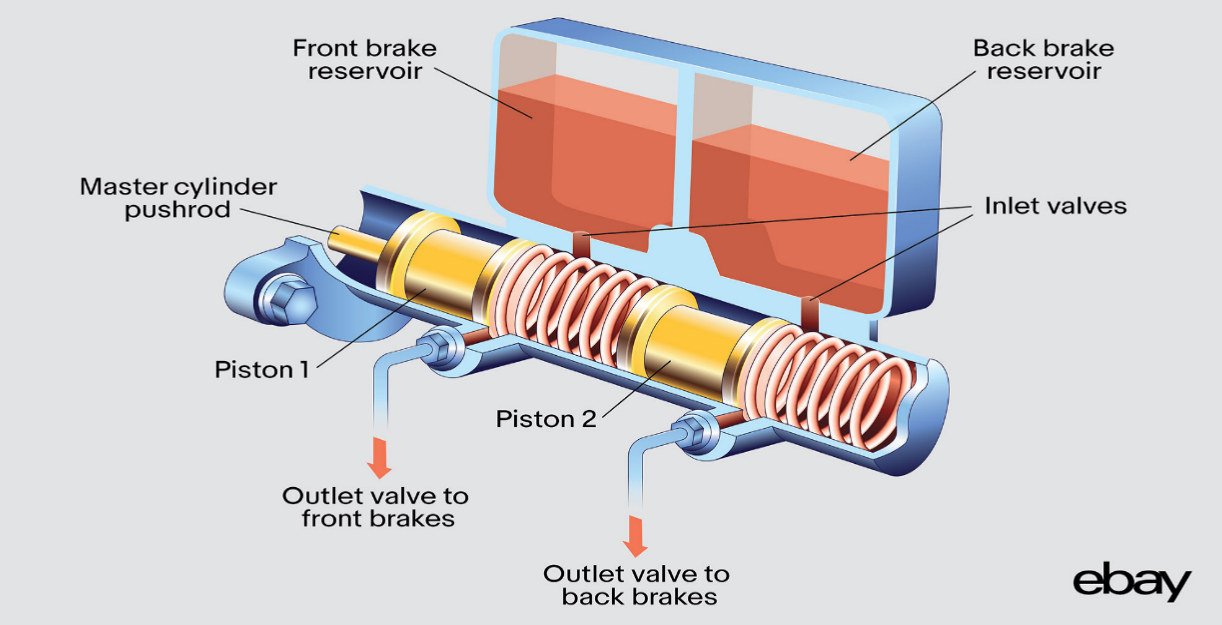
Recent Advancements and Innovations
The realm of braking systems is not static; it’s an evolving landscape driven by technology, safety needs, and environmental concerns. The last decade has seen significant advancements in the dual air brake system and related technologies. Let’s explore some of these innovations that are shaping the future of braking.
Electronic Air Brake Systems
A fusion of electronics with traditional pneumatics, the electronic air brake system (EABS) promises enhanced safety and efficiency:
- Functioning: EABS integrates electronic sensors and controllers with the conventional air brake system. When the brake is applied, electronic signals are sent instantaneously, controlling the release and application of compressed air to the brakes.
- Advantages: Enhanced response times, as electronics react faster than purely mechanical systems. This results in shorter stopping distances, especially crucial during emergency braking. Integration with other vehicle electronic systems, like stability control or adaptive cruise control, is also easier.
- Cost and Adoption: While the initial cost of EABS can be 10-15% higher than traditional systems, many modern heavy vehicles are adopting it due to the long-term benefits and potential for reduced maintenance expenses.
Energy Recovery and Regeneration
With sustainability being a global priority, braking systems are no longer just about stopping vehicles:
- Functioning: When brakes are applied, kinetic energy is usually lost as heat. Regenerative braking systems capture this energy, converting it into electrical energy that can be stored and used later.
- Advantages: This system is especially beneficial for electric or hybrid vehicles, as the recovered energy can be used to charge batteries, extending the vehicle’s range. It also reduces wear and tear on the brake components, leading to longer lifespan and reduced maintenance needs.
- Market Penetration: While more common in passenger electric vehicles, the adoption in heavy vehicles is on the rise, especially with the push for electrification in the transportation sector.
Future Trends in Air Braking
The horizon of air braking is expansive, with several emerging trends:
- AI and Predictive Braking: With advancements in artificial intelligence, future air braking systems might predict the need to brake based on road conditions, traffic data, and vehicle telemetry, ensuring optimal safety.
- Materials Innovation: Research is ongoing to develop brake linings and components from sustainable materials that offer high performance and are environmentally friendly.
- Integration with V2X: Vehicle-to-everything (V2X) communication will allow braking systems to interact with infrastructure, other vehicles, and even pedestrians. This can lead to adaptive braking patterns, enhancing safety in complex urban environments.
In conclusion, while the foundational principles of the dual air brake system remain steadfast, the innovations and integrations happening around it are transformative. The focus is not just on stopping vehicles but doing so in the smartest, safest, and most sustainable manner possible.
Conclusion
The journey through the intricacies of the dual air brake system is both enlightening and indicative of the engineering marvels in modern transportation. It’s not just about components and mechanics but a reflection of humanity’s drive for safety, efficiency, and progress.
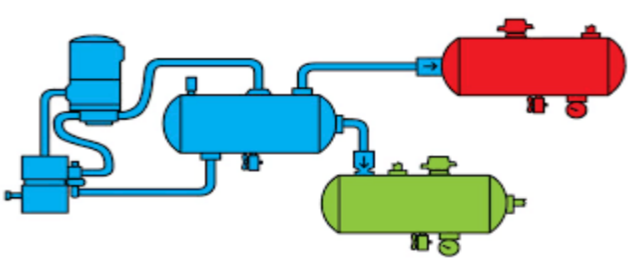
Importance in Modern Transportation
The dual air brake system stands as a sentinel of safety in today’s fast-paced transportation ecosystem:
- Safety First: It’s a system that ensures heavy vehicles, which carry vital goods, people, and services, can operate safely. The very principle of redundancy in this braking system underlines the immense value placed on human lives and cargo.
- Economic Impact: Reliable transportation means businesses can trust the timely delivery of goods. The efficiency of the dual air brake system, with its durability and reduced downtime, has a cascading positive effect on the economy. It ensures minimal disruptions in supply chains and reduces potential costs associated with accidents or delays.
- Environmental Considerations: Efficient braking not only saves lives but also impacts the environment. By reducing the number of times a vehicle has to be braked abruptly or inefficiently, fuel consumption can be optimized, leading to decreased emissions.
Continued Relevance and Evolution
While rooted in established principles, the dual air brake system is anything but static:
- Adapting to Change: With the advent of electric vehicles and smart transportation systems, the dual air brake system continues to evolve. Integrations with electronic systems, AI, and regenerative technologies highlight its adaptability.
- Research and Development: Billions are invested in enhancing the efficiency, safety, and sustainability of braking systems. These investments bear testimony to the system’s relevance and its pivotal role in future transportation paradigms.
- A Future-forward Approach: As we look to a future of autonomous vehicles, interconnected transport networks, and smart cities, the foundation laid by robust systems like the dual air brake will be instrumental.
In wrapping up, the dual air brake system is not just a testament to engineering prowess but a symbol of society’s unwavering commitment to safety, progress, and innovation. As roads fill up with newer vehicle models and as transportation demands grow, this braking system will remain at the forefront, safeguarding journeys and ensuring they’re efficient and sustainable.
